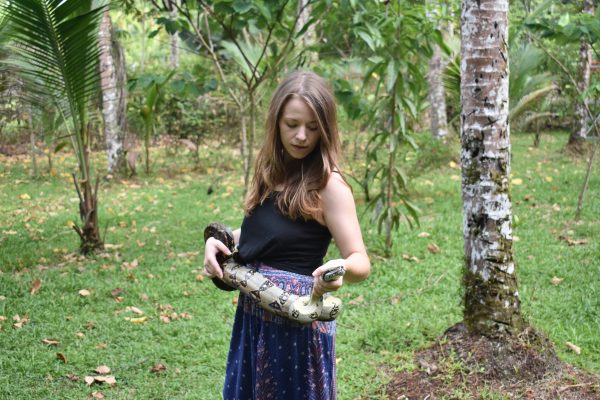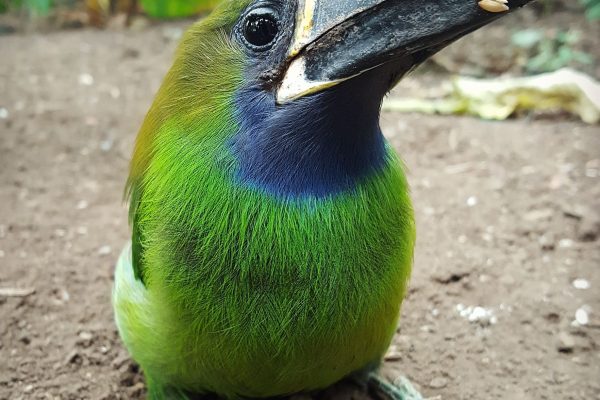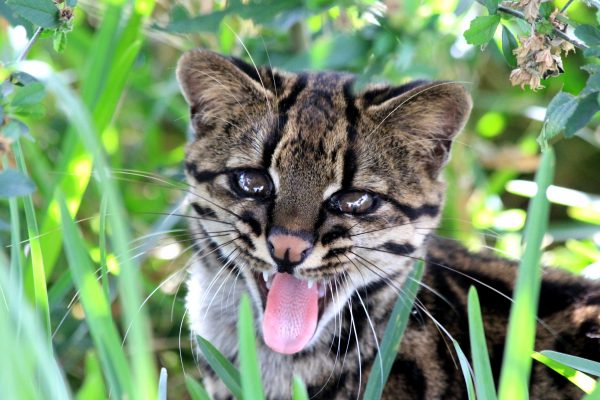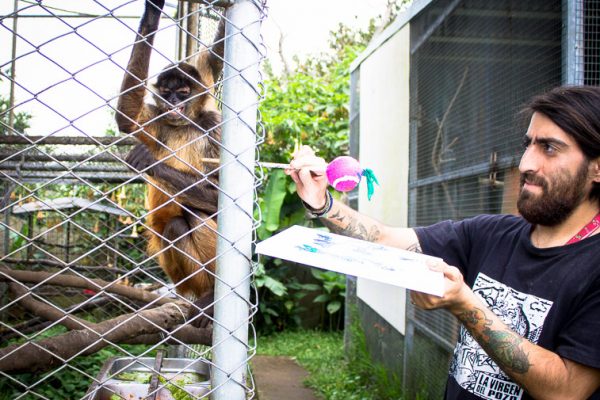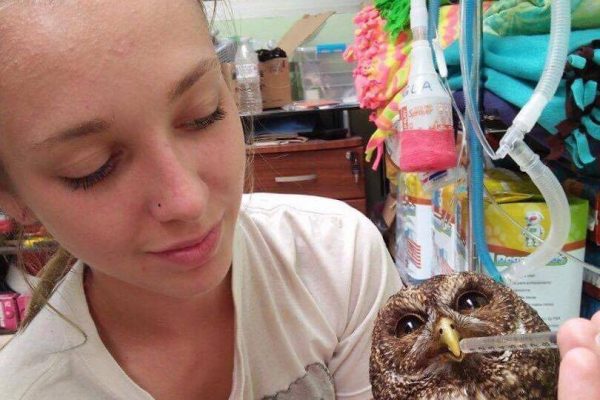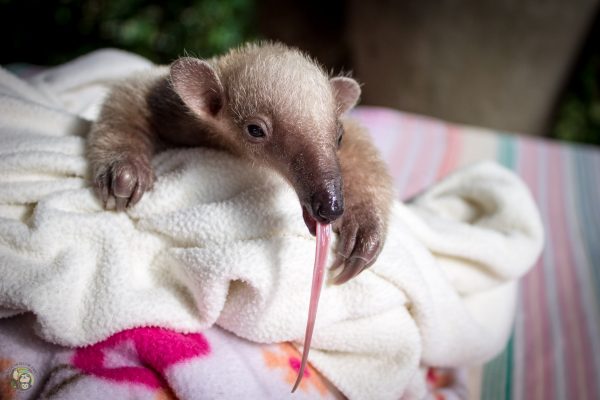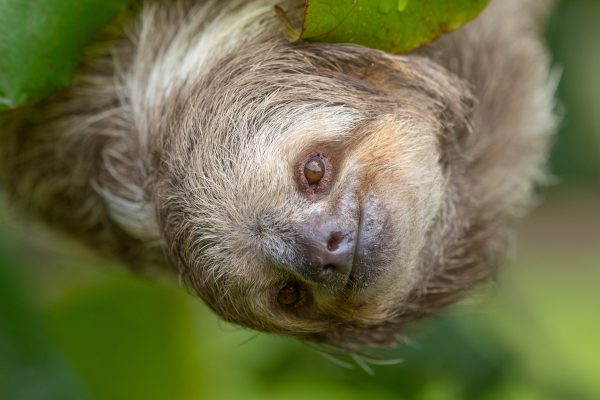-
From Across the Pond & Into the Jungle
So, my name is Alice, I’m your average 26-year-old British girl. I’ve been working with animals for half a decade as a zoo presenter, zookeeper, and more recently (for…
Continue reading -
Idaho Girl Finds Paradise
Howdy! I am the Release Site Coordinator at Toucan Rescue Ranch’s Release Site located in Sarapiqui de Heredia, Costa Rica. I’m from Sandpoint, Idaho, a little town located in the Idaho Panhandle, nestled between the Selkirk and Cabinet mountain ranges, alongside Lake Pend Oreille, not far from the Canadian border. I’m happiest when I am outdoors so you’re most likely to find me surfing the snow, blazing trails, or taking a dip in Pend Oreille. In the spring of 2016, I graduated with my B.S. in Business and Communications; I am currently in the process of applying to law school. I plan on studying environmental law, focusing on the conservation of natural resources in hopes of providing representation for individuals, organizations, animals, and our planet, who or which could not otherwise help themselves. I first learned about TRR from my dear friend Zara Palmer, the TRR Marketing Specialist. We were both working at a pizza shop atop our local ski hill. Over the course of the season, we shared countless stories and experiences, many of hers about TRR. Inspired by her stories, I applied to volunteer and happily was accepted!!! I remember the months leading up to my arrival at TRR seemed endless. In July 2016, I packed my bags and spent two months at TRR as a Daily Operations Volunteer. I fell in love, with the animals, the people at the ranch, their mission, Costa Rica - all of it. Needless to say, two months was too short so I went home to save some dough. With little hesitation, I postponed law school for a year and committed to six more months with TRR. However, this time I would be returning as the Release Site Coordinator, an opportunity I am tremendously grateful for. In this role my primary responsibilities incorporate my business skills as well as my love for animals and nature, they include conducting daily rounds, monitoring all animal care activities, and providing Leslie with regular status reports. My main focus includes implementing approved pre-release plans, monitoring and managing the Toucan Breeding Program, and identifying and communicating abnormal animal behaviors. In addition, I have some exciting projects I want to finish while I’m here. Two of which I am particularly excited about are geared toward sustainability: building a chicken coop and creating a vegetable garden. Although my time at the Release Site will eventually come to an end, the Toucan Rescue Ranch will forever be with me for it has carved out a place in my heart. And I hope to always be apart of this extraordinary organization for the rest of my time here on planet earth. By Release Site Coordinator Intern, Kendall Watts Release Site Photos Captured by Kendall Watts setREVStartSize({c: 'rev_slider_7_1',rl:[1240,1024,778,480],el:[],gw:[1240],gh:[868],layout:'fullwidth',mh:"0"}); var revapi7, tpj; jQuery(function() { tpj = jQuery; if(tpj("#rev_slider_7_1").revolution == undefined){ revslider_showDoubleJqueryError("#rev_slider_7_1"); }else{ revapi7 = tpj("#rev_slider_7_1").show().revolution({ jsFileLocation:"//toucanrescueranch.org/wp-content/plugins/revslider/public/assets/js/", duration:1000, visibilityLevels:"1240,1024,778,480", gridwidth:1240, gridheight:868, minHeight:"", spinner:"spinner0", responsiveLevels:"1240,1024,778,480", disableProgressBar:"on", shuffle:true, navigation: { onHoverStop:false }, viewPort: { enable:true, visible_area:"20%" }, fallbacks: { allowHTML5AutoPlayOnAndroid:true }, }); } });
Continue reading -
Esmeralda’s Rehab Journey
I happened upon Esmeralda in my first week at the Toucan Rescue Ranch (TRR). She was clumsy and uncoordinated- the kind of animal I'm normally drawn to- so I instantly felt connected to her. As time went on, I learned she had come from the illegal pet trade, but there wasn't much else known about her history. She didn't fly and spent all of her time on the floor of the enclosure, struggling to grip or perch on branches. Once witnessing this, I made it my mission to get her perching and exercising her little feet. To encourage her to exercise her foot muscles, we spent time building low climbing structures she could navigate to reach her food bowls. More time passed, and her confidence slowly built as she managed to hop from branch to branch. Esmeralda was then moved to an enclosure with many small trees and a dirt floor. This was great for two reasons. She was able to hop between the lower branches of those small trees and continue to build strength in her feet, and secondly, the dirt floor allowed her a much better grip. Now, when I enter the enclosure, I see her hopping confidently without tripping and she is hard at work carving and decorating a nesting log recently added into her enclosure. I cannot express how special it is to see an animal grow and gain so much confidence in their abilities. Esmeralda is one of the reasons I chose to extend my volunteer stay here at TRR. It's animals like her that remind us to stay positive and keep persisting no matter how hard life is. By former volunteer Talia Harris
Continue reading -
Tabu the Endangered Oncilla
The Oncilla (Leopardus tigrinus) sometimes referred to as a tiger cat, is one of the smallest felid species in the Americas. Their coat is typically a light brown colour with dark brown/black splotches as such they are often mistaken for Margays or Ocelot although they are considerably smaller weighing on average 1.5 to 3 kg. Oncillas live nocturnal lives in thick vegetation, making them difficult to find and thus little is known about their lives. They are good climbers however they typically hunt ground-dwelling prey, mostly small rodents but also lizards, birds and invertebrates. Studies have shown that in areas with a higher concentration of larger cats eg. Ocelots and Pumas the Oncillas became more active during the daytime, possibly to minimise competition. Oncillas are considered vulnerable by the IUCN with threats including poaching for its fur and deforestation for coffee plantations, cattle ranching and agriculture. In the wild Oncillas have a lifespan of about 11 years, however they have been know to survive up to 20 years in captivity. Oncillas are rarely found in captivity with only 2 individuals, both male, in captivity Costa Rica. Tabu is thought to have originally been kept as a pet, however he is now able to relax in the sun and practise his stalking skills as a resident at the Toucan Rescue Ranch. By former intern Katie Grant
Continue reading -
Why Enrichment is SO Important
[In the picture above. Pablo, a volunteer, offers Izzy a customized paintbrush so she can become her very own Picasso.] The happiest animal is a free animal. The Toucan Rescue Ranch (TRR) and everyone that works here truly believe that. The goal of our organization is to keep animals free. The bulk of our animals arrive to our doorstep injured, sick or defenseless due to the direct or indirect action of people. Our first task is to heal them and try to release them, but a number of these animals are in such a shape that they couldn't survive in the wild. That's where TRR comes in. The rehabilitation center in San Josecito is where we keep our permanent residents and do our educational tours. It provides us with the means to keep the operation going while also helping us teach people how to prevent more issues with wildlife. While our Sanctuary conditions provide an optimal learning opportunity for our visiting humans, it can be bleak for our residents. In captivity, animals designed to survive in the ever-changing wild, now have to make little effort to survive. With their every need taken care of, animals tent to get restless, so we work hard to ensure our animals are engaged, entertained and enriched. The goal of our enrichment program is to make sure our residents do not go stir crazy and to encourage wild behavior associated with good mental health. Enrichment may vary from hiding their food to providing puzzles. Some examples include bathtubs for birds to encourage wild behavior, fruit burritos and food inside cardboard boxes to encourage foraging, new smells and live prey. Keeping animals free is our primary goal but keeping those who cannot be released happy and healthy is also a top priority. Stay tuned to our social media to learn more about our ongoing enrichment program and for updates on our animals. By Biologist Pedro Montero Castro
Continue reading -
TRR Inspired Me to Become a Vet Tech
Before coming to Costa Rica I was working a full-time desk job and working towards a psychology degree. I had considered changing my degree to something geared toward wildlife rehabilitation but I didn't want to make such a drastic decision without first dipping my toes in the water. I came to the Toucan Rescue Ranch (TRR) in July, 2016, with a plane ticket to go home exactly 30 days later. That changed about a week into my visit. I immediately fell in love with the ranch and knew that I wanted to stay and contribute here for as long as possible. Spending everyday with these animals gave me something that I had never felt before. After speaking with some of the veterinarian volunteers, I decided it was time for me to make the change and work towards a degree focused on saving animal lives. TRR has completely inspired and motivated me. The best part about it all is that I get to continue working for the ranch while going to school. The experiences and practice that I see daily at TRR have helped me tremendously in my studies. By intern Mackenzie King | Read these types of articles first on our newsletter! Subscribe today!
Continue reading -
Tiger Lily the Lesser Anteater
The Lesser anteater or Tamandua (Tamandua Mexicana): Anteaters are very curious and tend to cover very long distances looking for food. Their technique is simple- sniff around to find food, attack the nest, tree or any bug filled substrate, with their claws, make a hole big enough for the tongue to fit and go to town on the bug buffet. The initial assault takes the insects by surprise, but they quickly mount their defense and start protecting themselves. The thick coat of the anteater helps keep them safe for a bit, but soon, they are overwhelmed and must move on. The process immediately starts all over again as there’s no time to rest when you need to eat 9,000 insects a day. To achieve this goal, they will hit from 50 to 90 nests. They move in a straight line to ensure they attack new nests and catch the bugs by surprise. The long distances that they have to cover put them at risk since we humans tent to build roads everywhere, thereby segmenting their territories. Crossing a road is probably the deadliest activity an anteater attempts. If they’re lucky, they can cross quickly to the other side without any interruptions. If they’re not and they see a car coming, they will panic. Sadly, these animals are far too brave for their own good and will try to fight the oncoming car. White with a colored vest, anteaters are the most elegant of the bug-eating animals that we care for. And Tiger Lily, named after the princess from Peter Pan, piles on immense amounts of cuteness to her elegance. She came to the rescue center when she was a tiny baby. We don’t know exactly what happened to her mom, but she was an orphan near a road and needed help. She was a feisty anteater and refused to eat. Little by little, we gain her trust and now she loves milk so much that she practically bathes in it. Lily is less than a year old and is following a successful program that we have implemented before. First comes the milk. Then we spice it up with insectivore (food for bug-eating birds) then we add some termites to the milk. Next, we introduce a termite nest and if she passes this test, then she can go to a tree to find her own food. This, of course, would be the ideal way to do it, but when working with wildlife, ideal is synonym with, “in your dreams. Now we have an anteater that is a great climber, loves fruit and milk, but won’t touch a bug. Maybe she’s vegetarian, some suggest. She’s about seven-months old and our plan is to release when she’s one-year old, so the clock is ticking and we will be working non-stop to make sure she can live up to her species name. By Biologist Pedro Montero Castro
Continue reading -
A Sloth in Heat
Female three-fingered sloths come into estrous, or heat, multiple times a year and boy, do they like to scream about it! When a female sloth is "in heat" and ready to breed she doesn't wait for the males to come to her, she actively encourages them with high-pitched screams. The males will then follow the sound of the screams until he finds her. However, if multiple suitors find her, they may fight each other until the strongest male wins the right to mate. Once decided, the female will let the male approach. In a matter of minutes, intercourse is finished. In some cases, a pair has been found to stay together in the same tree for a few days, sometimes mating again. In others, the male has left shortly after fulfilling his role. Both genders are promiscuous and are likely to mate again. The female three-fingered sloth's pregnancy will last 6-7 months (for two-fingered it is 10-11 months!) and typically only one baby is born, although on some occasions, twins have been reported. Not a lot is known about the courting and reproduction of sloths as it has only been recorded on rare occasions. Recently, our resident three-fingered sloth, Bella, was in heat and we were lucky enough to witness her mating calls, although we're not sure the neighbors would share the sentiment. By former intern Katie Grant | Read more articles like this one by subscribing to our newsletter!
Continue reading


